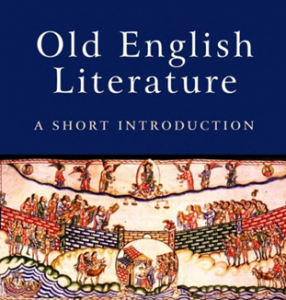PDF #134 – Daniel Donoghue – Old English Literature, A Short Introduction

Old English Literature (OEL) – The Anglo-Saxons left us accounts of two defining moments in the formative years of their literature. The first is a famous story about an illiterate peasant who one night miraculously refashioned his native
poetic tradition.
How Old English Literature Began
OEL, or Anglo-Saxon literature, encompasses literature written in Old English, in Anglo-Saxon England from the 7th century to the decades after the Norman Conquest of 1066. “Cædmon’s Hymn”, composed in the 7th century, according to Bede, is often considered as the oldest surviving poem in English.
Poetry written in the mid-12th century represents some of the latest post-Norman examples of Old English; for example, The Soul’s Address to the Body (c. 1150–1175) found in Worcester Cathedral Library MS F. 174 contains only one word of possible Latinate origin, while also maintaining a corrupt alliterative meter and Old English grammar and syntax, albeit in a degenerative state (hence, early scholars of Old English termed this late form as “Semi-Saxon”).
The Peterborough Chronicle can also be considered a late-period text, continuing into the 12th century. The strict adherence to the grammatical rules of Old English is largely inconsistent in 12th century work – as is evident in the works cited above – and by the 13th century the grammar and syntax of Old English had almost completely deteriorated, giving way to the much larger Middle English corpus of literature.
Beowulf
The poem Beowulf, which often begins the traditional canon of English literature, is the most famous work of Old English literature. The Anglo-Saxon Chronicle has also proven significant for historical study, preserving a chronology of early English history.
In descending order of quantity, OEL consists of: sermons and saints’ lives; biblical translations; translated Latin works of the early Church Fathers; Anglo-Saxon chronicles and narrative history works; laws, wills and other legal works; practical works on grammar, medicine, geography; and poetry. In all there are over 400 surviving manuscripts from the period, of which about 189 are considered “major”.
Besides Old English literature, Anglo-Saxons wrote a number of Anglo-Latin works.
After reading “OEL”, you can check important issues for ESL teachers on the section PDFs. And visit my channel by YouTube.
